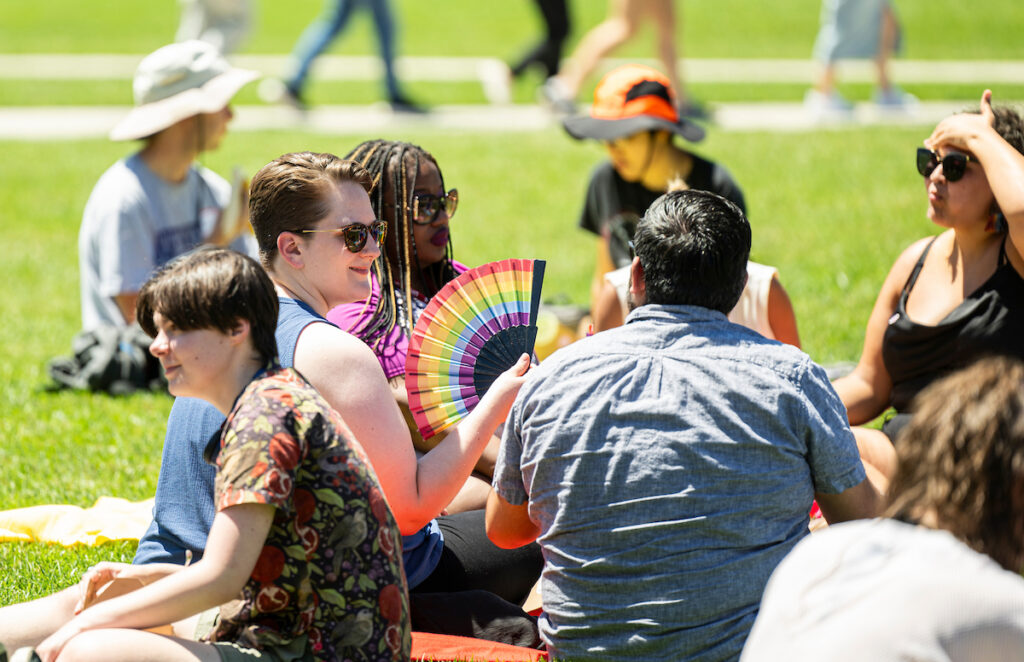
For LGBTQ+ Students, Housing Can Be a Struggle Beyond Availability
LGBTQ+ students worry about finding community, and gender inclusive housing on campus.
By: Elizabeth Frusciante
For G Sorenson, a sophomore double majoring in journalism and linguistics at the University of Wisconsin-Madison, finding housing isn’t just about location, price or square footage; it’s about safety, respect and community.
“Oh, very high,” Sorenson said when asked how difficult it is to find housing in Madison. “It’s well known that Madison is one of the hardest places to find housing. You have to sign up with so little knowledge, and then we get stuck in these situations.”
Sorenson, who identifies as a pansexual lesbian, said the pressure to lock down housing early led to an uncomfortable first-year living situation. “I just jumped into any lease I could, and that was a mistake.”
But the challenge goes beyond availability. For LGBTQ+ students like Sorenson, housing decisions are deeply influenced by concerns around inclusivity and safety, both from landlords and potential roommates.
“My first year, I was looking into the gender-inclusive housing, and I was excited about that,” Sorenson said. “Finding a comfortable space is important.”
Though the university has taken steps to make on-campus housing more inclusive, such as offering single bathrooms and gender-inclusive dorms, the culture within those spaces does not always reflect the policies.
“They allow it, but each person has to still acknowledge that you are not exactly what you look like,” said Sorenson, describing the feeling of an ignored gender expression. “It’s not intentional, but it feels like a brush-off, an undercurrent.”
Instances of verbal harassment have also made Sorenson more cautious. “When I’m out with friends, I hear people yelling slurs,” they said. “No one steps in, and my friends have to hold me back from doing something.”
This constant awareness impacts not just housing choices but also roommate selection. “I want to feel safe. I want to feel respected,” Sorenson said. “If I don’t vet people beforehand, I just have to find out later when it’s under their control instead of mine.”
While Sorenson has not experienced overt mistreatment from roommates, they have felt that boundaries around safety and comfort, like being notified when men are in the shared space, have sometimes been overlooked. When gender and sexuality are sensitive subjects, it’s hard to find roommates who don’t cross those boundaries.
Even with landlords, Sorenson says communication tends to be rigid. “The biggest issue is inflexibility. There’s no outreach. No queer community spaces that lessors are connecting you to. They’re not going to be advocates.”
Sorenson said a digital tool highlighting queer-friendly housing or community hubs would be a game-changer. “It’s always like, ‘I think you’re gay and I want to be friends,’ but you can’t just say that,” they said. “Still, finding that community is so safe and welcoming.”
Ultimately, Sorenson’s housing experience at UW–Madison is more than just navigating a tough rental market. It’s a reflection of what many queer students face: a search not just for a place to live, but for a place to be understood.
Sources:
Francisco. A., Miranda P., Mixto F., Delaware Cruz J. (2024). Navigating Struggles and Successes: Lived Experiences of LGBTQIA+ student. Psychology and Education. International Standard, https://scimatic.org/storage/journals/11/pdfs/3414.pdf.
Resources to Recover. (2022). 5 biggest stresses LGBTQ students face in college life. https://www.rtor.org/2021/06/16/5-biggest-stresses-lgbtq-students-face-in-college-life/

